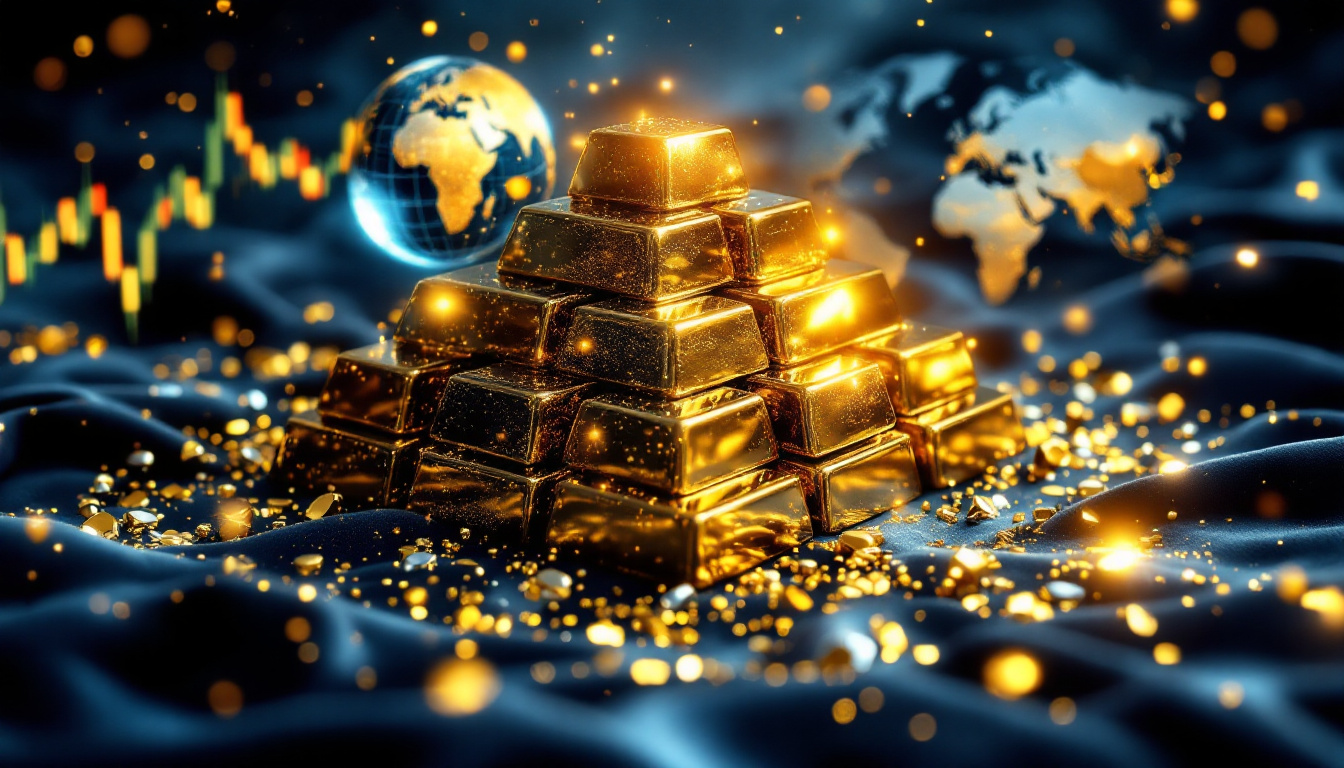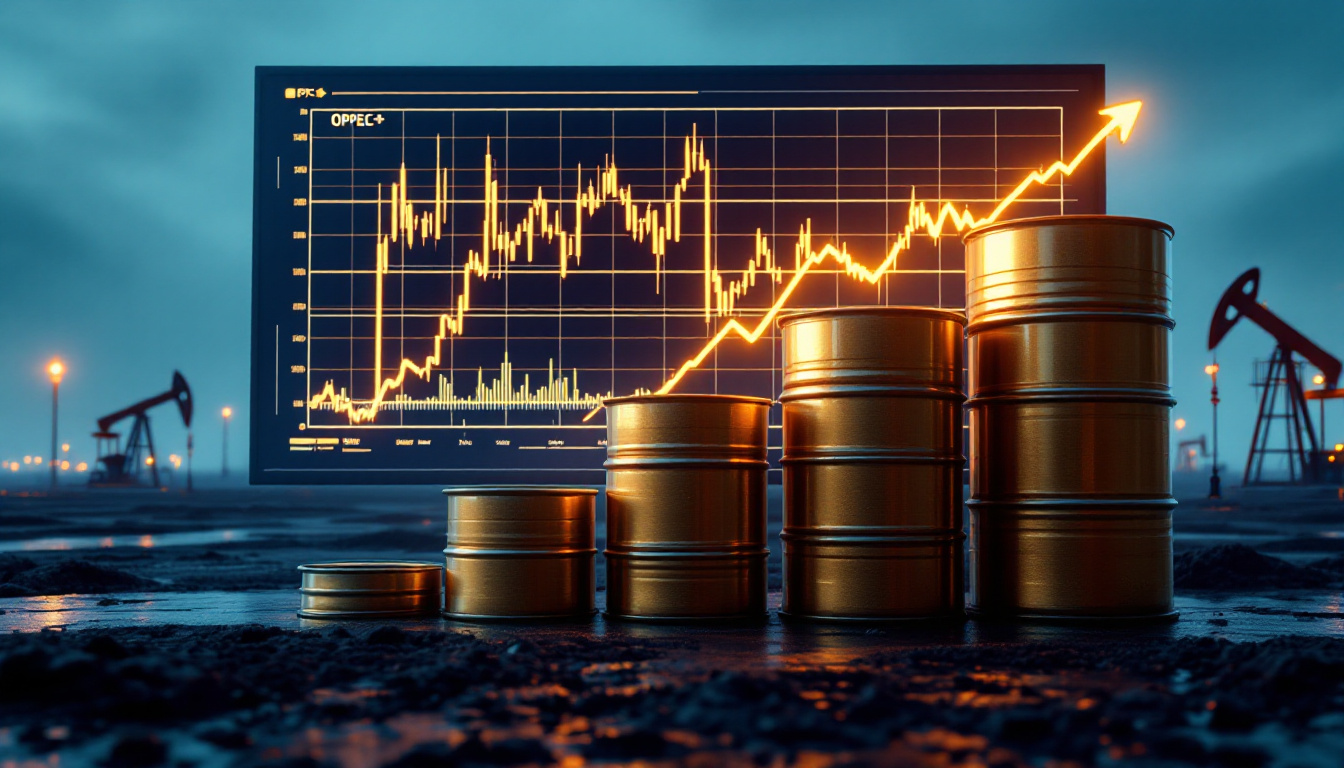Why Are Antimony Stocks Showing Value After Market Carnage?
The global antimony market has undergone a seismic shift since late 2023, with prices surging from US$12,000 per metric ton to US$60,000 per metric ton over 16 months. This unprecedented rally stems from China's strategic export restrictions, compounded by surging demand from military and renewable energy sectors. Despite recent market volatility, antimony's dual role in civilian infrastructure and defense systems positions it as a cornerstone of modern industrial policy.
The Critical Nature of Antimony in Global Markets
China controls approximately 50% of global antimony production and over 70% of processing capacity, enabling it to weaponize supply chains amid escalating US-China tensions. In September 2023, Beijing implemented export controls on antimony, followed by a full ban on exports to the US in December 2023 under the guise of "national security concerns."
These measures have crippled Western access to a metal integral to defense systems (e.g., tank plating, night-vision goggles) and green technologies like solar panel manufacturing. The timing aligns with China's push to prioritize domestic consumption, particularly for its solar industry, which accounts for 35% of global photovoltaic production.
The ongoing critical minerals race has intensified as nations compete for resources essential to technological advancement and national security.
Antimony's unique properties—including flame resistance and semiconductor compatibility—make it irreplaceable in critical sectors:
-
Renewable Energy: High-purity antimony trioxide is essential for solar glass panels, with the International Energy Agency projecting a 150% increase in solar capacity by 2030.
-
Defense Systems: The Pentagon's 2024 report identifies antimony as a Tier 1 strategic material, required for munitions (e.g., M825 artillery shells) and armor plating.
-
Consumer Electronics: Antimony-based flame retardants remain vital for circuit boards, with global semiconductor demand growing at 8.3% annually.
How Geopolitical Tensions Are Driving Antimony Demand
China's export bans exemplify its broader strategy to leverage control over critical minerals—a tactic previously deployed with rare earth elements in 2010. The Biden administration's 2024 Defense Production Act allocations earmarked US$450 million for antimony stockpiling, yet domestic production remains negligible.
Europe faces parallel challenges, with the EU Critical Raw Materials Act identifying antimony as a "strategic priority" but lacking viable mining projects.
Ongoing conflicts in Ukraine and the South China Sea have accelerated military antimony consumption:
-
NATO members collectively require 18,000 metric tons annually for ammunition production, a 40% increase from pre-2022 levels.
-
The US Army's modernization program mandates antimony for next-generation night-vision systems (AN/PVS-31A), with per-unit demand up 25% compared to legacy models.
Western nations are struggling to secure antimony supplies at a time of increasing military spending, creating an urgent demand for non-Chinese sources. This has led to a scramble for viable mining investment strategies outside China's sphere of influence.
The Perfect Storm for Antimony Prices
China's solar panel manufacturers currently consume 22,000 metric tons of antimony annually—a figure projected to double by 2028 as PERC cell adoption expands. This domestic prioritization has reduced China's export volume by 62% year-over-year, creating a 15,000-ton global supply deficit.
Military stores require replenishment amid ongoing conflicts, further straining available supplies. Europe and the US have committed to increase military capability to counter Russian and Chinese threats, with antimony being a key component in many defense applications.
The antimony investment insights reveal that the spot price has exhibited haven-like stability amid broader market volatility, outperforming gold by 14% in Q1 2025. This perfect storm of supply constraints and growing demand from both civilian and military sectors has pushed prices to record levels, creating a sustainable pricing environment for producers outside China.
Why Antimony Stocks Are Potentially Undervalued
Recent market sell-offs have adversely affected antimony stocks despite the metal's critical status and strong fundamentals. This disconnect creates potential opportunities for investors who recognize the strategic importance of antimony in the current geopolitical climate.
Breakaway Research's analysis suggests Nagambie Resources (ASX:NAG) could appreciate 782% to AU$0.15/share, driven by its 2.1Mt resource at Hillgrove Mine. Similarly, Larvotto Resources (ASX:LRV) offers leveraged exposure through its Ohui project, hosting 4.2g/t gold alongside antimony mineralization.
According to recent market analysis, antimony explorers are pushing toward near-term production as prices continue to climb with no signs of abating.
The sector's average enterprise value/resource ton ratio of US$15/t lags behind comparable critical mineral peers (e.g., lithium: US$45/t), suggesting a 200% upside potential upon supply chain repricing. This valuation gap persists despite the urgent Western world need for antimony supplies, which creates long-term demand stability unmatched by most industrial metals.
Current stock prices may not fully reflect the fundamental supply-demand imbalance that is likely to persist for years. This creates a potential entry point for investors seeking exposure to critical minerals with both defensive and growth characteristics.
Key ASX Antimony Players to Watch
Here's a closer look at the primary ASX-listed companies with significant antimony exposure:
| Company | Ticker | Price (12/04/2025) | Resource Estimate | Key Project |
|---|---|---|---|---|
| Nagambie Resources | NAG | AU$0.017 | 2.1Mt @ 4.8% Sb | Hillgrove, NSW |
| Larvotto Resources | LRV | AU$0.22 | 0.9Mt @ 3.1% Sb | Ohui, NZ |
| Southern Cross Gold | SX2 | AU$1.45 | 1.4Mt @ 2.9% Sb | Sunday Creek, VIC |
| Trigg Minerals | TMG | AU$0.08 | Exploration stage | Wild Cattle Creek |
Most of these antimony stocks are currently trading below levels seen before recent market volatility, despite strengthening fundamentals. This presents a potential opportunity for investors who understand the strategic importance of this critical metal.
Companies with advanced projects or existing resources offer the most immediate leverage to antimony prices, while exploration-stage companies like Trigg Minerals provide higher-risk, higher-reward exposure to potential new discoveries.
The Antimony-Gold Connection
Co-deposited antimony and gold resources, exemplified by Trigg Minerals' (ASX:TMG) Wild Cattle Creek project (5.3g/t Au, 3.8% Sb), enable producers to hedge against gold price fluctuations. This natural geological association provides investors with exposure to both critical minerals and precious metals markets.
Recent gold market analysis indicates that this precious metal continues to be a safe haven during economic uncertainty, which complements antimony investments.
Revenue splits vary by deposit:
-
Antimony-Dominant (≥60% Revenue): Lower operational risk due to fixed-price defense contracts.
-
Gold-Dominant: Enhanced margins during precious metal rallies, with current AU$3,050/oz prices buffering capital costs.
This dual-commodity exposure creates a natural hedge, as gold typically performs well during geopolitical uncertainty—the same conditions that tend to drive antimony demand. Investors can therefore gain exposure to both critical minerals and traditional safe-haven assets through a single investment vehicle.
Antimony's Role in the New Energy-Defense Paradigm
Antimony's criticality in both decarbonization and defense modernization creates a demand floor unmatched by most industrial metals. While recent market turmoil has temporarily suppressed equity valuations, the structural supply deficit—projected to reach 30,000t/year by 2027—supports sustained price appreciation.
The Sydney Morning Herald recently reported that "anti-hero" share prices are rising high on antimony finds, highlighting growing market recognition of this critical resource.
Investors prioritizing geopolitical resilience should consider direct exposure through ASX-listed juniors with near-term production potential, particularly those offering gold co-credits. Regulatory tailwinds, including the US Defense Logistics Agency's expanded stockpile acquisition program, further de-risk domestic antimony ventures.
In this climate of strategic resource competition, antimony emerges not merely as a commodity play but as a geopolitical instrument—one where market fundamentals and national security imperatives converge to create unparalleled investment leverage. Understanding the global commodities insights can help investors navigate this complex landscape more effectively.
FAQs About Antimony Investments
What is driving the current antimony price surge?
The price of antimony has increased from US$12,000/t to US$60,000/t in just 16 months due to China's export restrictions, growing military demand for replenishing stockpiles, and increased usage in the solar industry. This combination of supply constraints and rising demand from multiple sectors has created a perfect storm for antimony prices.
How does China control the antimony market?
China produces approximately 50% of global antimony supply and controls even higher percentages of processing capacity. In September 2023, China imposed export controls and later banned antimony exports to the US entirely in December. This dominant position allows China to effectively weaponize the supply chain for geopolitical leverage.
Why is antimony considered a critical metal?
Antimony is deemed critical due to its essential applications in both civilian sectors (solar panels, fire-retardants, semiconductors) and military uses (ammunition, tank plating, night vision equipment), combined with limited supply sources outside China. Its irreplaceable properties in these applications and the concentration of supply make it strategically important for Western economies.
How do geopolitical tensions affect antimony investments?
Escalating US-China trade conflicts and broader geopolitical tensions increase antimony's strategic importance while potentially creating investment opportunities when market volatility temporarily depresses antimony stock prices despite strong fundamentals. This disconnect between stock prices and the underlying supply-demand dynamics creates potential value for investors with a longer-term perspective.
Ready to Capitalise on the Next Major Antimony Discovery?
Stay ahead of the market with instant notifications on significant ASX mineral discoveries, powered by Discovery Alert's proprietary Discovery IQ model. Explore why historic discoveries can generate substantial returns by visiting the Discovery Alert discoveries page and position yourself for potential antimony investment opportunities before the broader market.




